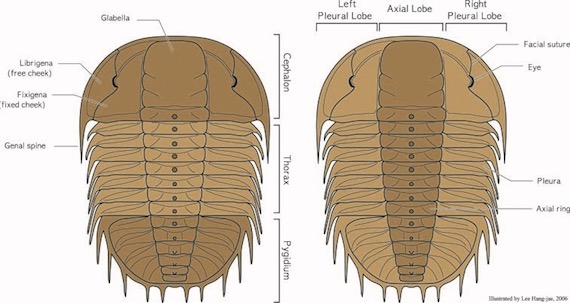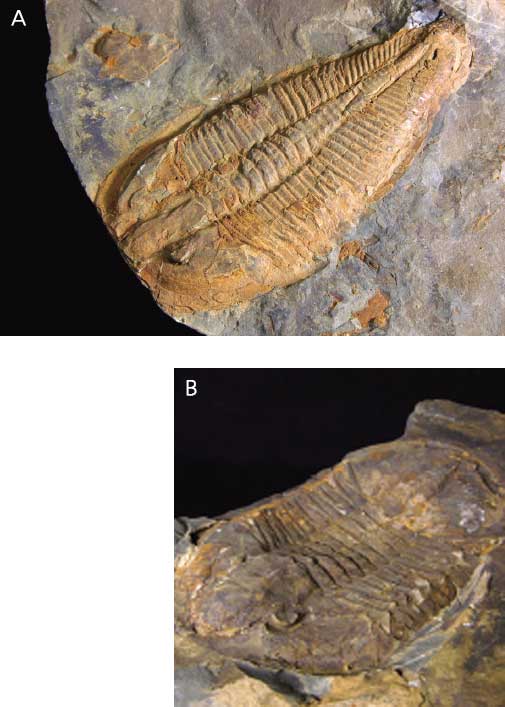Trilobite
Almost 80% of the living animals on Earth with scientific names belong to the phylum Arthropoda, and most of them are insects. An Arthropod's body is protected by a segmented exoskeleton from head to tail and each body segment possesses a pair of jointed limbs. In the Paleozoic Era, during which there appeared various fauna, with the exception of mammals and birds, arthropods already commanded an absolute majority in number of individuals. Trilobites were the most abundant amongst the arthropods.
Trilobites had evolved into numerous forms and sizes, from millet-grain to large cat-sized ones (over 70 cm long). Although most of them lived creeping over the sea bed, some small and light trilobites lived by swimming near the sea surface. They formed a complex ecosystem ranging from a lower class, taking organic matter through a filtering system, to an upper class predator, feeding on small animals and other trilobites. They flourished in all the seas for about 300 million years during the Paleozoic Era.

Morphological Division of a Trilobite
‘Trilobite’ is so named because its entire body is three-lobed, divided longitudinally by a pair of grooves separating a rounded central axis (axial lobe) from the lateral areas that are called pleural lobes. It is also divisible into a head, thorax, and tail.
Korean trilobites
Many trilobite fossils are found in Gangwon Province, where the Paleozoic Cambrian and Ordovician strata are present.
A. Dolerobasilicus yokusensis (about 13 cm long, Ordovician, Taebaek, Korea)
B. Basiliella sp. (about 15 cm long, Ordovician, Taebaek, Korea)
